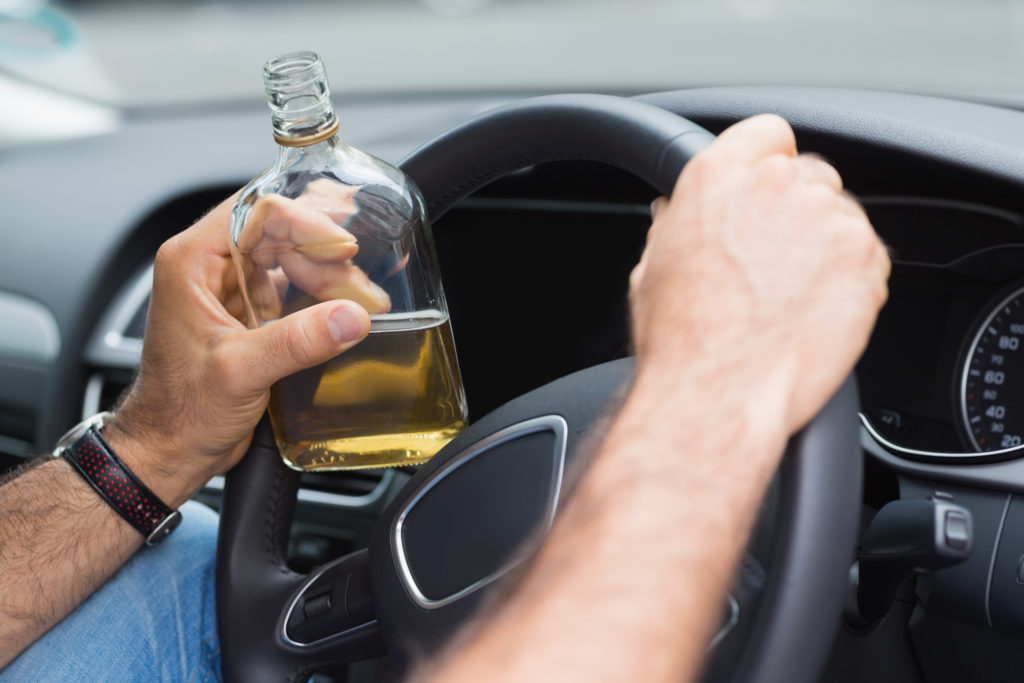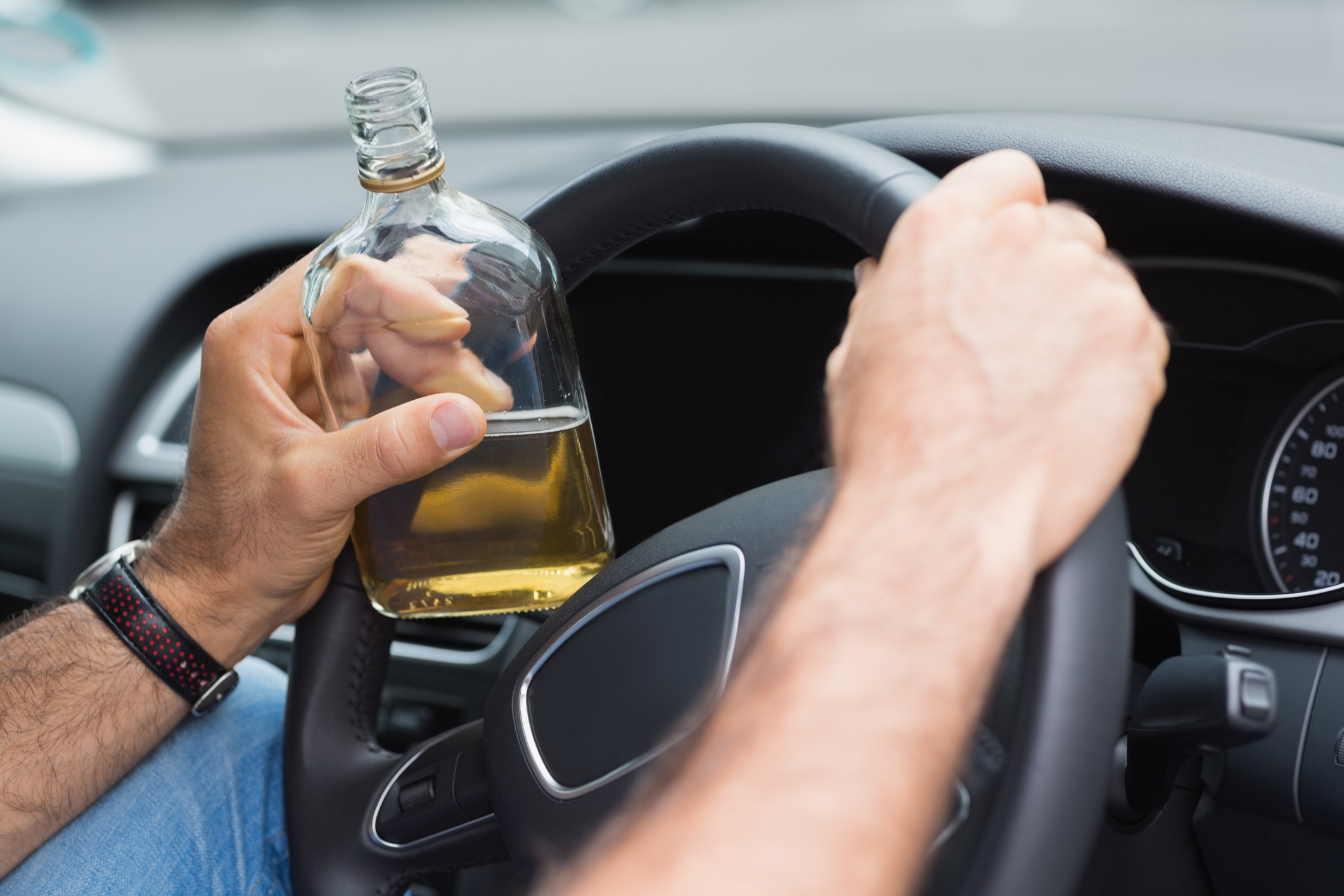
Alcohol consumption is proven to slow reflexes, decrease the ability to judge another’s car position on the road, reduce eye/hand/foot coordination, and hinder the ability to make rational decisions. Alcohol consumption paired with the size and volume of trucks can be an especially lethal combination. Between the length of trucks, their substantial weight rolling down the road, and the potential for hazardous material in trailers, truckers face many unique challenges while they work to drive safely on highways.
In its Highway Safety Annual Report, the Governor’s Traffic Safety Committee found that more than 5,500 people are injured in New York each year due to alcohol-related crashes. Furthermore, according to a report released by the New York State Department of Motor Vehicles (NYSDMV), nearly 83% of all truck crashes were attributable to human error, including alcohol consumption.
Although truck crashes do not occur as frequently as other accidents involving different types of vehicles, when truck accidents do happen, the effects and damages are often severe. Such a crash can cause physical, mental, and emotional distress for everyone involved. It’s important for victims to seek help right away from an experienced attorney to map out a strategy for physical and financial recovery.
Truck Drivers Held to a Higher Standard
Drunk driving laws make it illegal nationwide to drive with a BAC at or above 0.08%. BAC refers to the amount of alcohol in the bloodstream at the time of testing. Although the New York law refers to a 0.08 percent BAC, a driver can be convicted of driving while under the influence of alcohol even when the BAC is below 0.08 percent. That’s because even small amounts of alcohol dulls the senses, decreases reaction time, and interferes with sound judgment.
Although 0.08% is both the nationwide and New York threshold, truck drivers who hold a commercial drivers license (CDL) are held to a much higher standard. A blood alcohol content (BAC) level of .04% constitutes grounds for a DWI charge for CDL licensed drivers if suspected of drunk driving while operating a commercial vehicle. However, if a person with a CDL is driving a passenger vehicle when stopped under the suspicion of a DWI, the 0.08% BAC level applies. Also note that driving a commercial vehicle implies consent to a sobriety check, according to the Federal Motor Carrier Safety Administration (FMCSA): “Any person who holds a CDL is considered to have consented to such testing as is required by any State or jurisdiction…”
Collecting Through One’s Insurance
New York has a “no fault” auto insurance system. This means your own insurance (your personal injury protection or “PIP” coverage) pays for your medical treatment and other out-of-pocket losses incurred by anyone covered under the policy, regardless of who is at fault for the accident.
New York requires registered motor vehicles to have liability insurance with certain minimum coverage amounts:
- $25,000 for bodily injury to one person
- $50,000 for bodily injury to all persons
- $10,000 for property damage in any one accident
- Mandatory “no-fault” coverage of $50,000 is also required
Due to New York’s no-fault law, personal injury suits can be brought only for economic losses that exceed No-Fault benefits and for non-economic damages (such as pain and suffering) only if a “serious injury” is sustained.
Other Compensation Options
In analyzing truck crashes involving alcohol, courts look to all the relevant circumstances in order to determine fault and liability. A person injured by an intoxicated truck driver should get representation from an attorney right away to help determine the best way to get compensation. The unique facts of your case will determine what types of damages to sue for, as well as an estimated amount.
One way to step outside of New York’s no-fault car insurance claim system and pursue a claim against a driver who may have caused the car accident, the car accident injuries you suffered by the victim must qualify as “serious” under the threshold set by state law. Any of the following qualifies as serious:
- significant disfigurement
- bone fracture
- permanent limitation of use of a body organ or member
- significant limitation of use of a body function or system, or
- substantially full disability for 90 days.
For example, in the case of Jiyoun Pyeun v. Jin Woong Woo, the court held the victim’s injuries were severe enough to meet the requirements defined by Insurance Law §5102. Ms. Pyeun sought to recover damages for the injuries she sustained as a pedestrian and brought suit against the truck driver, Mr. O’Neil. In response, Mr. O’Neill asked the court to dismiss the victim’s complaint, stating that the victim did not suffer a serious injury as defined by New York’s threshold law. But Ms. Pyeun submitted medical reports attesting to the fact that her injuries were permanent and resulted from trauma related to the accident. As such, the court recognized Ms. Pyeun’s likelihood of success in recovery and denied Mr. O’Neill’s request.
Furthermore, victims may also be able to step outside of New York’s “no fault” rules to file a liability claim in cases where the medical expenses exceed the $50,000 PIP limit. In cases of wrongful death, a lawsuit may also be initiated to seek payment for all damages that are legally compensable as the result of a driver’s negligent actions resulting in a victim’s death.
If someone is injured by the driver of an uninsured vehicle, a claim should be filed with the injured parties’ insurance. However, the uninsured driver coverage included in the victim’s policy may not be nearly enough to cover damages. If this is the case, the best solution is to file a civil personal injury suit.
Two or More At-fault Parties
In some cases, more than one party may be at fault for a truck accident victim’s injuries. Depending on the facts of the case, the driver, the company’s truck owner, or a bar serving alcohol to the driver before the accident could all be held liable, for example.
In Chiara v. Dernago, the court found the victim sustained serious injuries under the definition of Insurance Law §5102 and awarded her damages against both the driver and the company’s truck owner, Shellfish. Mr. Dernago drove a Shellfish company truck to a restaurant and spent approximately two hours there. During that time, he discussed Shellfish’s product with the restaurant manager and consumed multiple beers. After he left the restaurant, he stopped at another nearby restaurant to make a delivery and then drove toward the Bronx to make another stop. Shortly after, Mr. Dernago drove onto a bridge where he rear-ended a pickup truck, and effectively “launched” the pickup truck into the victim’s vehicle.
As the company’s truck owner, Shellfish, was held partially responsible for the accident. Shellfish and Dernago were required to pay $160,000 in compensatory damages. Additionally, due to the truck driver’s reckless conduct, the victim was also awarded $70,000 in punitive damages.
Awarding Punitive Damages
In some rare cases, a court will grant a victim both compensatory and punitive damages. Punitive damages are meant to both punish the intoxicated driver for reckless behavior and to warn other drivers that they should not engage in the same dangerous activity.
For example, the court allowed an injured victim to bring a claim for compensatory and punitive damages against the intoxicated driver in Gershman v. Ahmad. Here, the victim sustained serious personal injuries while she was a passenger in a vehicle operated by Mr. Ahmad. Due to a long night of drinking, he lost control of the vehicle and struck light poles and a tree. Although punitive damages are rare, courts allow them when an injured victim can produce evidence showing that the driver at fault was both intoxicated and engaged in reckless conduct. In order to assess a claim for punitive damages, as well as compensatory damages, it’s important to contact an attorney immediately after the accident.
Common Scenarios in Truck Accidents Involving Drunk Driving
In its Large Truck and Bus Crash Report, the U.S. The Department of Transportation found there were nearly half a million police-reported crashes involving large trucks in the span of a year, resulting in 4,415 fatal crashes. While the majority of fatal crashes (83 percent) and nonfatal crashes (88 percent) involving large trucks occur on weekdays, alcohol-related accidents occur more frequently on the weekend.
Nationwide, fatal crashes involving trucks frequently occur in rural areas or on interstate highways. Approximately 57% of all fatal crashes involving large trucks occurred in rural areas, 26% occurred on Interstate highways, and 13% fell into both categories by occurring on rural Interstate highways.
Frequently Asked Questions
New York uses a pure comparative negligence fault model. This means each party is responsible only for his or her percentage of fault. Even if you are 99% at fault, you have the opportunity to recover compensation in a personal injury lawsuit. However, the court will reduce the amount of damages awarded in proportion to your degree of fault. If the case goes to a jury trial, the jurors will determine the percentage each party was at fault.
Generally, the penalties for CDL drivers are more severe than for regular license holders. In New York, if a holder of a CDL is convicted for DWI and having a BAC higher than .04% for the first offense, he or she may have driving privileges revoked for one year in addition to the criminal penalties faced by other drivers. For a holder of a CDL, a second DWI offense results in permanent revocation of his driving privileges in addition to fines and possible imprisonment.
Yes. The police on the scene of your accident likely asked the driver to take a breathalyzer test to record his or her BAC on the spot. If the driver was transported to the hospital, it is likely his or her blood was taken there to determine the driver’s BAC. This evidence of the truck driver’s intoxication can be used in your lawsuit. Remember, too, the FMCSA considers holding a CDL as “implied consent” to submit to testing for intoxication.
You may qualify for both compensatory and punitive damages. Compensatory damages is money awarded to you to compensate for your injuries, property damages, and any economic loss, such as lost wages. Though rare, punitive damages are meant to both punish the intoxicated driver for reckless behavior and to warn other drivers that they should not engage in the same dangerous activity.
Who Should You Contact if You’ve Been Injured by a Drunk Truck Driver?
If you or someone you love has been injured in a truck accident where the driver was intoxicated, contact the attorneys at Rosenblum Law so that we can help determine if you are entitled to compensation. Email or call 888-815-3649 today for a free consultation about your case.






 888-815-3649
888-815-3649
